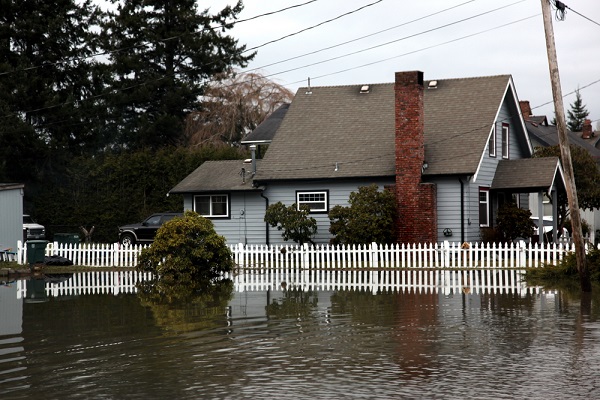3 Tips Agents Can Offer Clients to Protect Their Property From Flooding

By: Olivia Overman
Sixty-five percent of U.S. residents who have homeowners or renters insurance incorrectly believe their current policy protects their home and belongings against flood loss, according to a recent poll from Selective Insurance.
In fact, “many homeowners or renters are shocked to learn their standard insurance policy provides no coverage when they file a claim for flood damage, underscoring the importance of education and communication with clients,” says Cassie Masone, vice president, flood operations, Selective Insurance.
Over the past several years, the number of catastrophic weather events leading to severe flooding incidents has increased in frequency and severity, according to a report by Climate.gov. As the climate changes, independent agents play a major role in educating their clients on the need to purchase flood insurance, as well as providing advice to them on the steps to take to protect their property.
Here are three pieces of advice agents can offer clients to protect their properties from a flood:
1) Proactively mitigate flood risk. “Because of the way we’re seeing weather patterns change, protecting a home can simply come down to drainage,” says Richard Folkman, vice president of catastrophe operations, flood & carrier practice leader, Crawford & Company. For clients, “it’s about being proactive with the areas around your house, making sure that water can’t accumulate. We see faulty or blocked drainage around houses where, unfortunately, the client has put it in as a flood claim, but the drainage around the house itself is not draining away from the house—that’s not a flood at that point.”
“Clients should elevate the building as a first step to protect their properties from flooding,” Masone says. “If boosting a structure is cost-prohibitive, we recommend installing flood vents, filling in basements, and moving machinery to higher floors. Even with these steps, flood insurance is critical to protect against flood losses.”
2) Protect your home with flood insurance. Clients need to understand that “just because FEMA categorizes your property into a specific flood zone, it doesn’t mean that you do or don’t have flood exposure,” says Christa Nadler, executive vice president, Risk Placement Services Inc.
Flooding is the most frequent and expensive natural disaster in the U.S. and is not covered through most homeowners and renters insurance policies. With more than 20% of the NFIP claims coming from outside high-risk flood areas, those who live in areas with low-to-moderate flooding risk should understand their risk and consider flood insurance, according to the National Association of Insurance Commissioners (NAIC).
“We see a lot of people ignoring the risk, so step No. 1 is to think what can happen—an example is all of the flash flooding events that we’ve seen over the last few years,” says Matt Junge, head of property underwriting U.S., Swiss Re. “So, whether it’s hurricane-induced heavy rainfall, or intense localized rainfall like what happened in Maryland recently where they had what is called a ‘thousand-year flood,’ people tend to think if they don’t live near a body of water, they’re not going to be flooded. And that’s just not true.”
3) Photograph property and contents. Once a flood occurs, it is difficult for an insurance company to identify what exactly was in the property.
“You should document what you have in your house every year. Go through and take pictures of everything on the inside of your house,” Folkman says. “Because once a flood hits, mitigation companies come in and clear everything out, and then it’s up to adjusters to try and figure out what was there beforehand. And if we can’t approve it, we can’t pay for it.”
Olivia Overman is IA content editor.










